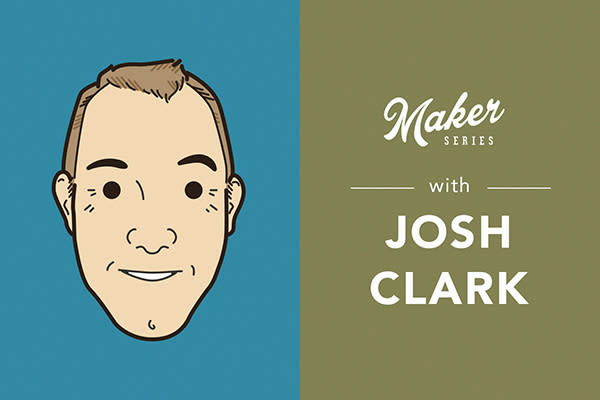It seems as if there is a new device hitting the market every other day. Have you ever stopped to think about what this means for the Web? What will user experiences look like five years from now if this trend of making every object into a “smart” object continues? Josh Clark spoke at the fifth Maker Series of the year and told us that as designers and developers, we need to think less about creating great desktop and mobile experiences and more about creating great, complete experiences.
A Mambo Between Devices
Josh offered some helpful wisdom for crafting great experiences across multiple devices—the “multidevice mambo” as he called it.
Studies show that 90% of consumers participate in the MAMBO or Multidevice Actions and Movement Between Objects. Think about the last time you found a product on your phone, placed it in a digital cart, and then went to checkout on your laptop, only to find your cart empty. Or the last time you emailed yourself a file in order to transfer between devices. There has to be a better way! Josh says the solution is to close the gap between when people decide something and when they take action. A good principle to remember is this: the best interface is the one that is closest at the moment.
We need to think less about creating great desktop and mobile experiences and more about creating great, complete experiences.
These ideas should ooze out of the products we design and build. Experiences should be fluid with no interruptions if the device or environment changes while a user is completing a task. Some companies are already tackling this issue (think Apple’s Airdrop or Google Docs), but it is clear that more work needs to be done.
Thinking UX Beyond the Screen
There’s more to the Web than screens. Josh talked about the link between the physical world, devices, platforms, and the Internet. He calls it the “Cha-Cha between channels,” and it’s important to consider as the number of devices connecting to the Internet continues to grow. UX teams no longer need to consider just phones, tablets, and computers; there’s an entire ecosystem of connected watches, cars, TVs, glasses, coffee pots, dishwashers, etc., that can play a role in a user’s experience—not to mention their actual physical environment.
With the number of sensors and devices that products now have access to, there’s virtually no limit to the potential for crafting unique experiences based on factors such as location, weather, time, ambient light, and speed, which can all be accessed through JavaScript API’s—the physical interacting with the digital.
The goal is not to make things and devices talk to each other but to have a better conversation. Ultimately, systems need to be smart enough to know when they are not smart enough.
Josh pointed out that “interfaces are really fragile.” Meaning, we are constantly creating and updating websites and other digital interfaces, only to change them a few months or years later. What has lasting impact is the system underneath everything. To create great experiences across devices, we have to focus on the underlying systems and ensure that the correct information can be transferred and accessed when needed. As Josh pointed out, the goal is not to make things and devices talk to each other but to have a better conversation. Ultimately, systems need to be smart enough to know when they are not smart enough.
Creating Magic
When devices communicate and “just work” in an effortless way for the user, the result is magical. We spent the afternoon session of the Maker Series dreaming up ways to turn ordinary household objects into “magical” devices. Josh led an exercise to help everyone dream of the potential for so-called enhanced objects. After all, don’t we all want things to be magical? Josh pointed out that most connected devices strive to fulfill five magical behaviors that we desire: telepathy, safekeeping, immortality, teleportation, and expression. While nothing can currently promise immortality, many strive to move us in that direction. Think of how the Fitbit monitors your health with the goal of giving you many years of healthy living. We want more of these magical ideals; therefore, we buy into things that promise to move us in that direction.
We split up into smaller groups, with each group receiving a different household object. My group considered the magical possibilities of a pair of weights. This required ignoring our practical minds and focusing on the “what if.” To start, we examined what the weights do, who and what they interact with, and what other objects or experiences are involved when people use them. We listed these out on sticky notes and then grouped everything into three potential use cases. Josh then instructed us to dream up magical abilities for the objects that would help users attain one of the five magical behaviors. Our grand idea was the weights were actually a fitness partner to help athletes’ health (related to the idea of immortality) by dynamically adjusting their mass and weight to push athletes to their maximum workout potential. This idea may seem crazy, but the point of the exercise was not to be realistic but rather to dream up a magical experience.
Make Your Own Magic
From a more practical perspective, we can apply this same principle when considering UX design. It helps us think less about just an interface or a single interaction and more about a cohesive experience that will create a magical, beneficial experience for users. Let’s not be afraid to dream big and imagine the “what if” scenarios that will create magical experiences for our users. Josh delivered a great talk and exercise that will help us all build great experiences for users who mambo from one device to another.

